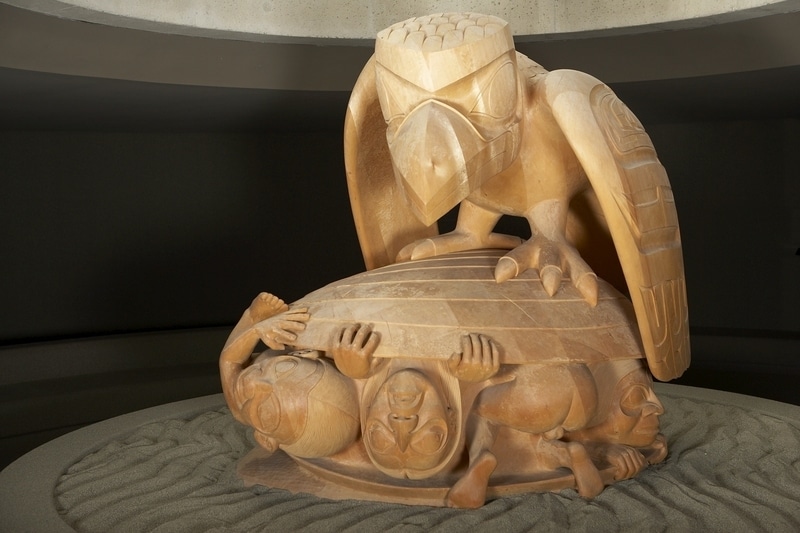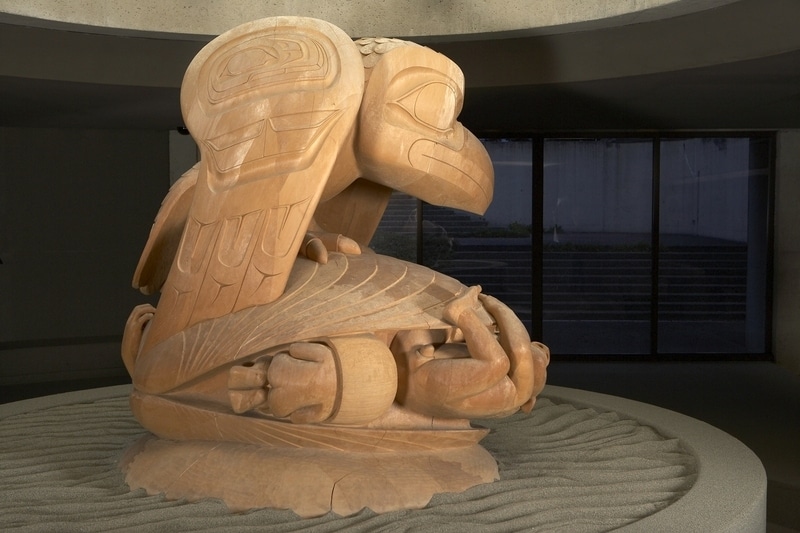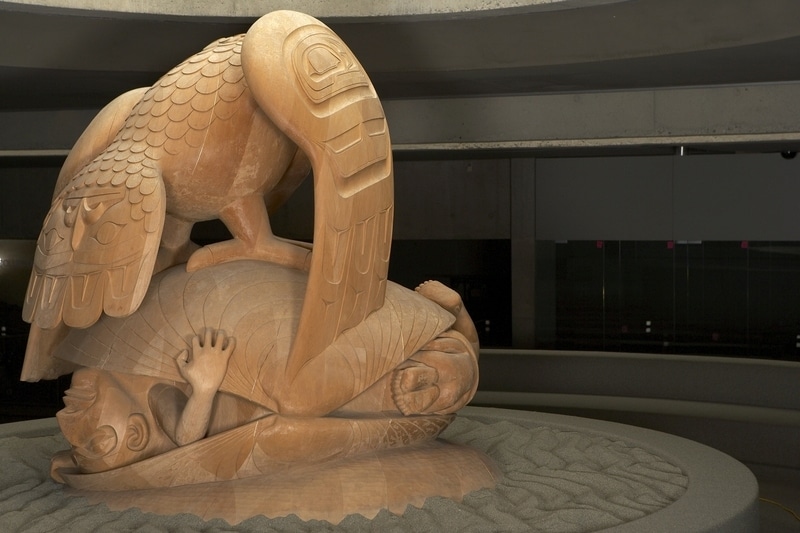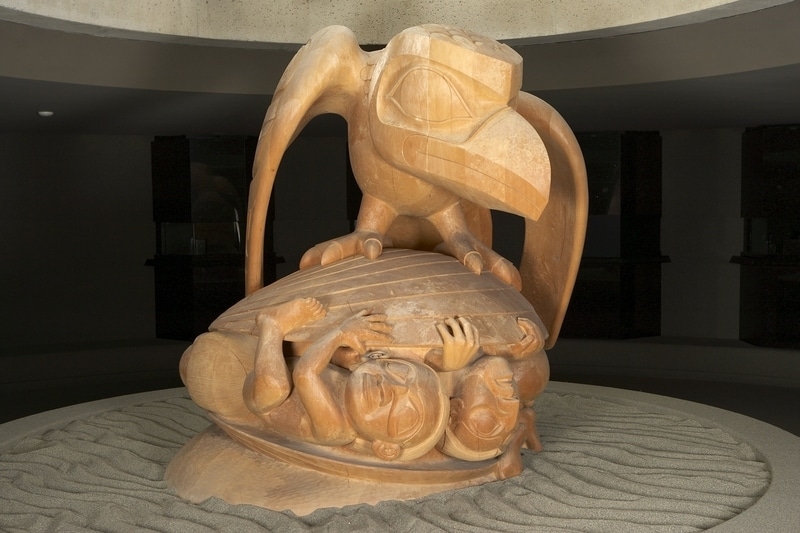The Raven and the First Men Item Number: Nb1.481 from the MOA: University of British Columbia








Description
Three dimensional carving of a raven standing atop a partially open clamshell from which six naked human figures are emerging. Raven: hunched body, wings curve away from body on each on side with tips touching top of clamshell; head is turned slightly to side on right; short straight beak, large depressed eye area contains ovoid pupils in pointed eyelid lines; salmon-trout head at top of each wing followed by a series of u forms; overlapping feather design on top of head and down back to inverted frontal face on tail; short legs end in feet with four talons. Clamshell: concentric growth rings on upper shell; rim of lower shell visible beneath humans; human figures from side on left: 1) back of a figure with feet beneath bottom, arms next to body and short straight hair; 2) figure with upturned frontal head, one hand and foot rest on upper rim of shell, exposed male genitals; 3) inverted frontal head with open mouth, hands clasp upper rim of shell; 4) back of lower portion of male figure with legs bent, feet extend over rim of lower shell; 5) frontal head with hair curving to back below ears, hands clasp lower rim of shell; 6) inverted frontal head, bent arm at side on right with hand against upper shell. Subtle varying expressions on frontal faces.
Cultural Context
contemporary art
Iconographic Meaning
The Haida legend of Raven and the First Humans: one day after the great flood Raven was walking along the beach at Rose spit in the Queen Charlotte Islands when he heard a sound emanating from a clamshell at his feet. He looked more closely and saw that the shell was full of small humans. He coaxed, cajoled and coerced them to come out and play in the wonderful new world. Some immediately scurried back into the shell, but eventually curiosity overcame caution and they all clambered out. From these little dwellers came the original Haidas, the first humans.
Narrative
Sculpture was from a 4 1/2 ton cube of 106 laminated beams; it took several years to complete. Sculpture assistants to Bill Reid were: Gary Edenshaw, Jim Hart, George Norris and George Rammell. Koppers International Canada Ltd. and Western Forest Products Laboratory assisted with technical problems. His Royal Highness the Prince of Wales unveiled the sculpture on April 1, 1980. It was celebrated on June 5, 1980, by the Haida community. The sculpture rests on a bed of sand brought to the Museum in 1980 by children from the village on Haida
Gwaii where this event is said to have taken place.
Item History
- Made by Bill Reid (Maker), Gary Edenshaw (Technician), Jim Hart (Technician), George Rammell (Technician) and George Norris (Technician) in Vancouver, British Columbia, Canada during 1980
- Collected during 1980
- Owned by Marianne Koerner and Walter C. Koerner before December 2, 1980
- Received from Marianne Koerner (Donor) and Walter C. Koerner (Donor) on December 2, 1980
What
- Name
- The Raven and the First Men
- Identification Number
- Nb1.481
- Type of Item
- sculpture
- Material
- adhesive and yellow cedar wood
- Manufacturing Technique
- carved and laminated
- Overall
- height 1.9 m, diameter 1.9 m
Who
- Culture
- Haida
- Creator
- Bill Reid (Maker), Gary Edenshaw (Technician), Jim Hart (Technician), George Rammell (Technician) and George Norris (Technician)
- Previous Owner
- Marianne Koerner and Walter C. Koerner
- Received from
- Marianne Koerner (Donor) and Walter C. Koerner (Donor)
Where
- Holding Institution
- MOA: University of British Columbia
- Made in
- Vancouver, British Columbia, Canada
When
- Creation Date
- during 1980
- Collection Date
- during 1980
- Ownership Date
- before December 2, 1980
- Acquisition Date
- on December 2, 1980
Other
- Item Classes
- carvings & sculpture
- Condition
- good
- Accession Number
- 0689/0001